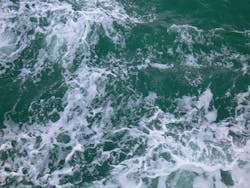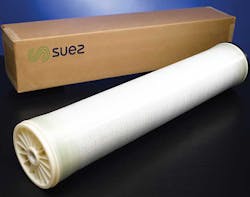MODEC employs nanofiltration membranes for Brazil offshore oil project
BRAZIL, OCT 5, 2018 -- Needing to eliminate sulfate from injection water for offshore oil production, MODEC turned to SUEZ for a full replacement of existing membranes on a Floating Production Storage and Offloading (FPSO) vessel in Brazil. For the project, SUEZ will provide 1,000 seawater sulfate removal (SWSR) nanofiltration membranes for MODEC's FPSO vessels MV22 and MV24 deployed in the Santos Basin.
Specifically, SUEZ will supply MODEC with SWSR-440 membranes that remove sulfate to drastically reduce scale and corrosion in the injection well, which can reduce oil recovery and plug the well. The FPSO vessels MV22 and MV24 are located in the giant pre-salt region of the Santos Basin, and are respectively capable of processing 100,000 and 150,000 barrels of oil per day. The membranes will be delivered by the end of 2018.
SUEZ's SWSR nanofiltration membranes have exceptional fouling resistance due to their three-layer membrane design and smooth surface. The membranes provide a high transmission of sodium chloride into the permeate water to minimize operating pressures. They offer a physical barrier for any suspended particles including bacteria, pyrogens and colloids. Additionally, the new membranes help prevent strontium and barium sulfate scale in injection wells and better mitigate well souring by reducing sulfate.
"This is an important milestone in our collaboration with MODEC and confirmation that our integrated advanced technology solutions for the oil and gas industry are addressing the toughest challenges of the market. We are seeing more and more clients approaching us for the SWSR nanofiltration membrane because of its high resistance to fouling and overall sulfate removal performance. We very are proud of the fact that MODEC has chosen our membrane technology for MV22 and MV24," said Craig Hobkirk, oil and gas global market director, SUEZ.

